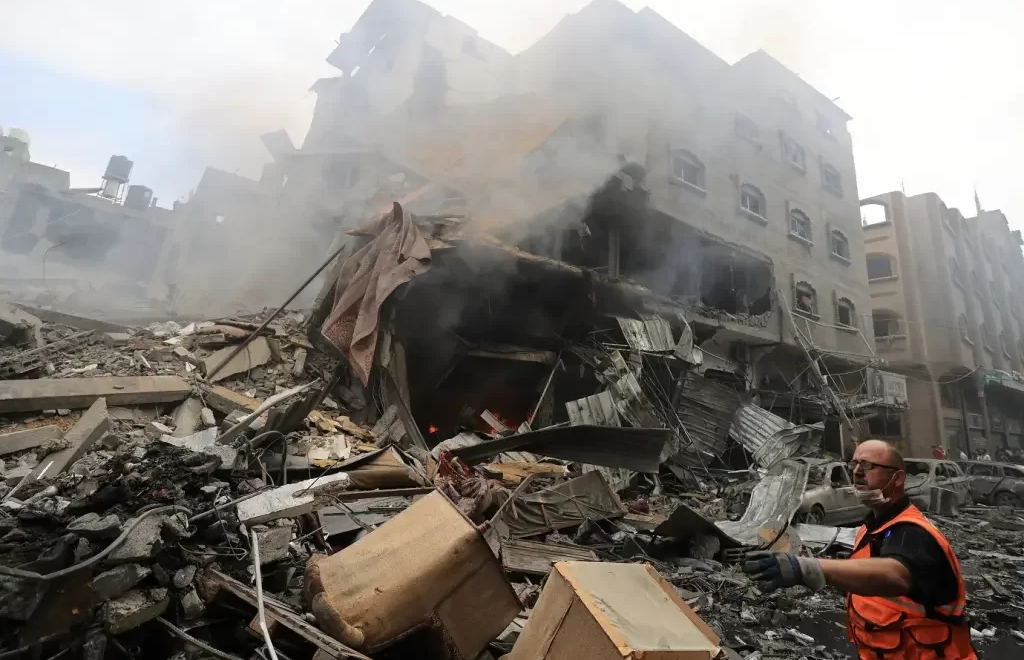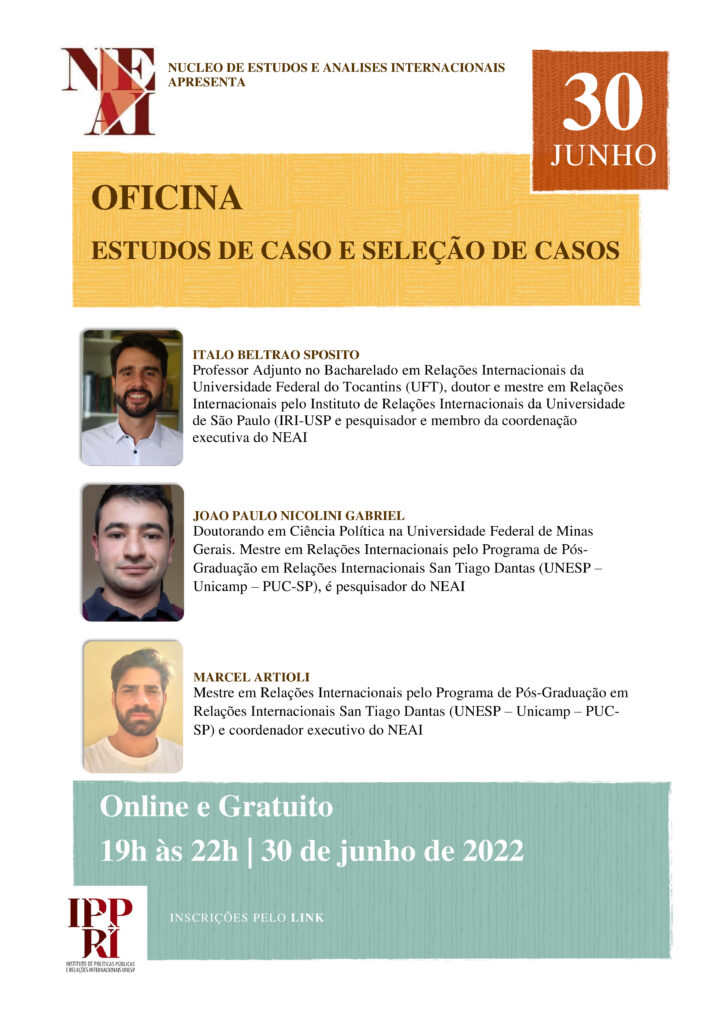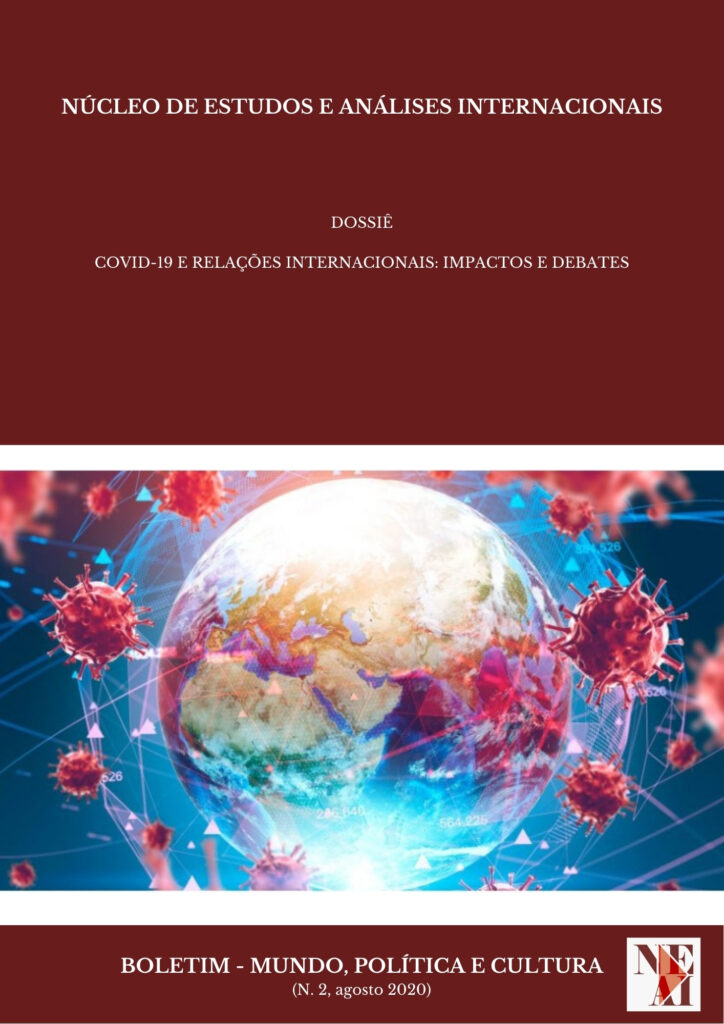
Fonte: Guerra em Israel: ataques do Hamas começaram em 7 de outubro no sul do país (Mahmud HAMS/AFP)
On October 7th, 2023, the Palestinian militant group Hamas launched a dual offensive with air and ground attacks on Israeli territory. The Israel Defense Forces (IDF) reported that around 2,200 rockets were launched from the Gaza Strip toward Israel. Situated along the Mediterranean coast between Israel and Egypt and home to approximately 2.3 million people, the Gaza Strip became the epicenter of this alarming situation. To gain a comprehensive understanding of these recent events, it’s essential to explore the historical context, even if only briefly, as it may not be the focus of the article. The origins of the Israeli-Palestinian conflict can be traced back to the era of the Ottoman Empire, followed by British control after World War I. During these periods, tensions between Jewish and Arab populations over territorial claims escalated. In 1948, the establishment of the State of Israel marked a turning point, which set the stage for not only conventional wars like the Six-Day War in 1967 with Arab neighbors, but also for the ongoing occupation of regions such as the West Bank. In this period and in the following years, there were deliberate attacks, oppression against civilians, and retaliatory actions, reflecting the escalating conflict.
What sets the events of October 7th apart is the element of surprise that caught Israel off guard, despite its advanced security and intelligence system, which failed to prevent and avoid the attack, and what remains unexplained. The ability of Hamas to orchestrate this unprecedented-scale assault, unparalleled in the past 50 years, stands as a remarkable feat. In response, Benjamin Netanyahu, the Prime Minister of Israel known for his right-wing policies, declared on the 9th that his country is now “at war” and mobilized reservists. Despite the recent disagreements over the government’s judicial reforms, a moment that Hamas likely perceived as a point of vulnerability, the comeback to this internal crisis demonstrates a sense of unity, which may or may not have been anticipated by the group. As expected, given the historical context of violence between the two regions, Israel is reacting swiftly and with extreme force. Netanyahu emphasized that “the enemy will pay an unprecedented price.”
Reports have documented numerous casualties from both sides of the conflict. Al Jazeera indicates the number of Israelis killed is at least 1,400, with 4,475 injured. On the Palestinian side, there have been 3,478 deaths in Gaza and 62 in the occupied West Bank, with 12,000 injuries in Gaza and 1,300 in the West Bank region. These numbers are still estimates and are expected to increase in the coming days as the state of war escalates. Furthermore, Netanyahu has declared a complete blockade of the Gaza Strip, denying millions of residents’ access to legal basis, such as food, water, gas, and electricity. Additionally, there have been reports of attacks on various locations, such as the Jabalia refugee camp in the north of Gaza Strip, Shati refugee camp (also known as Beach Camp), and a school run by the United Nations Relief and Works Agency for Palestine Refugees (UNRWA). Tragically, eleven of their workers have lost their lives since the onset of these attacks. The count of humanitarian workers losing their lives during the hostilities continues to rise, as exemplified by the recent loss of five members of The International Federation of Red Cross and Red Crescent Societies (IFRC) in Israel and the Gaza Strip.
The extent of violence encompassed attacks that claimed the lives of civilians, including on highways, and hitting residential buildings, medical facilities, schools and other civil structures, with one particular attack orchestrated by Hamas that got the attention of the media, resulting in the deaths of over 260 people attending the Supernova music festival, held in southern Israel. The ongoing systematic violence against the civilian population since then has been extensively documented through survivor testimonies, international press – professionals who remain in the region -and videos shared on the internet by friends and family of the victims. These videos have played a significant role in identifying individuals who may have been kidnapped, possibly aiming for future exchanges for Palestinian prisoners, a tactic historically employed in the Israel-Palestine conflict. The hostages can also serve as bargaining chips for Hamas, which they may leverage in response to Israeli actions, threatening to harm or even kill these civilians. It is important to emphasize that hostage-taking is strictly prohibited under international humanitarian law (IHL). Moreover, IHL also prohibits the killing of humanitarian actors, including professionals from organizations like the IFRC.
Mohammad R. Mhawish, an award-winning Palestinian journalist in Gaza City, is one example providing a crucial perspective through the compilation of testimonials and photographs that shed light on the experiences of the victims. The author underscores that “the level of fear and terror is much higher now. In the past, Israel targeted security posts and resistance locations associated with Hamas and Islamic Jihad – Islamic Jihad, founded in 1981 with the aim of establishing a Palestinian state, is a Palestinian militant organization that is closely aligned with Iranian officials. But now, it’s mosques and refugee camps. People live in constant fear, uncertain of when they might become targets.”
Predictably, both sides point fingers at each other. Israel categorizes Hamas as a terrorist organization and deems their methods as illegitimate. Palestine acknowledges the years of frustration over the longstanding hardships endured by Palestinians in Gaza and other areas due to Israel’s occupation. The term “apartheid regime,” frequently employed in pro-Palestinian discourse, underscores the deliberate oppression endured throughout the years by Israel. It is critical to note that Hamas remains significantly weaker than Israel, even with the substantial support, both in terms of technology and logistics, that it receives from Iran, a significant regional actor. It is also important to highlight that Iran has explicitly stated that it had no influence over the attack carried out by Hamas from Gaza, a possibility that Israel has taken into account, particularly in light of Iran’s position against Saudi Arabia’s efforts to normalize relations with Israel, as part of a broader strategy to strengthen its ties with the United States, particularly in terms of defense.
It is highly improbable that this war will substantially reshape the power dynamics between the two sides, especially in favor of Palestine and its resistance. The prospect of reaching a resolution in the near future appears distant. Achieving a lasting peace depends on dialogues addressing critical issues such as the presence of Jewish settlements in the occupied West Bank, the dire humanitarian situation in Gaza often described as an “open-air prison”, the contested status of Jerusalem – considering its cultural and religious significance –, and the feasibility of a Palestinian state. In a thought-provoking perspective, Harvard University’s Professor of International Relations, Stephen Walt, points out the following reality: “In international politics, power matters more than justice”. Yet, he highlights that “this event – and many clashes that precede it – may also reveal the limits of power”. The argument emphasizes that while Hamas’s attack and the ongoing conflict may not secure a victory for Palestine in the war, they reveal that Israel is not invulnerable. Meanwhile, it is the civilian population that continues to suffer the most, both in this ongoing conflict and any future hostilities that may happen in the coming decades.
*Revisão: Rafael Seabra
**Este artigo não reflete, necessariamente, a opinião do Núcleo de Estudos e Análises Internacionais (NEAI), do Instituto de Políticas Públicas e Relações Internacionais (IPPRI/UNESP).









